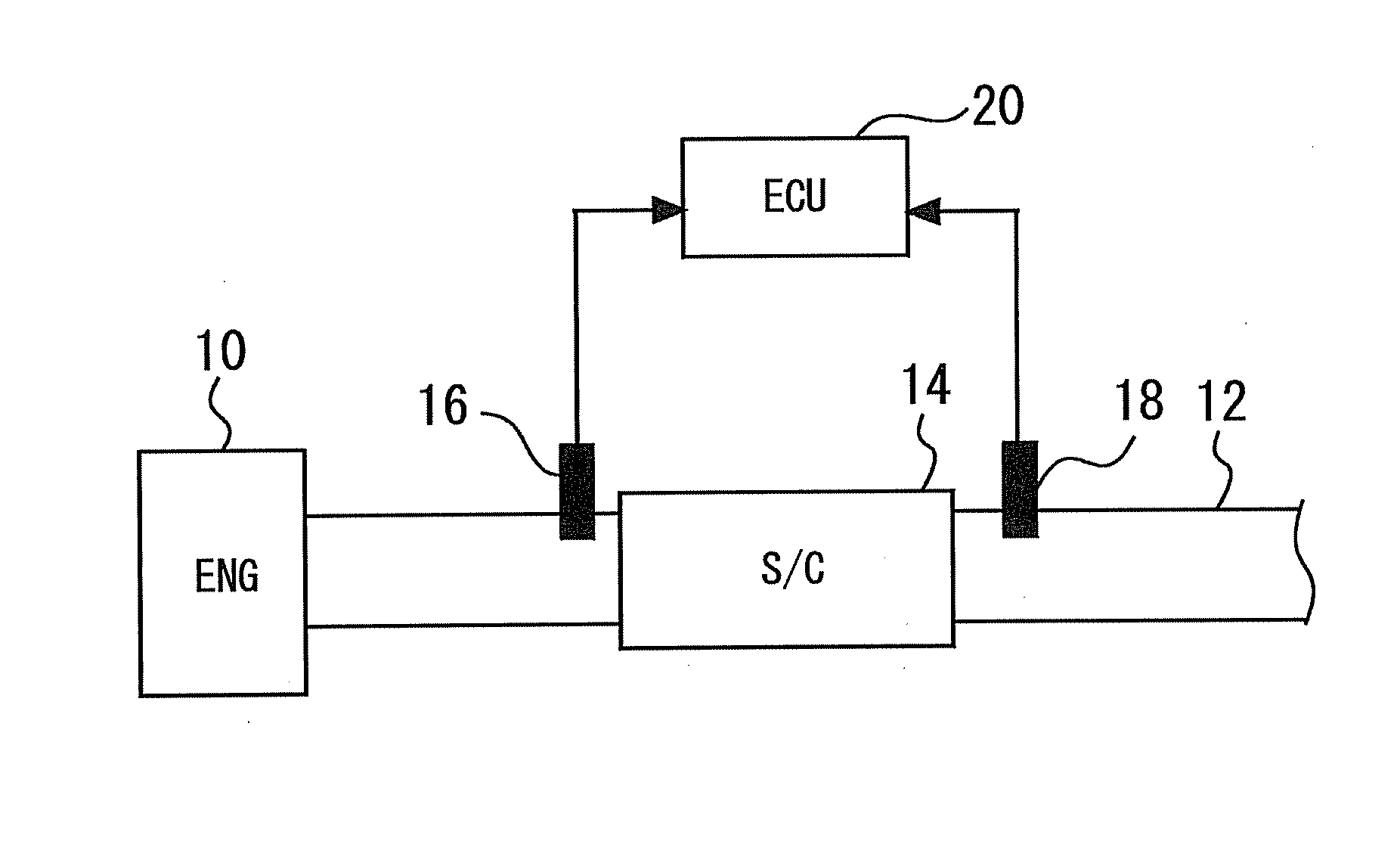Catalyst-degradation detection device
a detection device and catalyst technology, applied in the direction of electrical control, exhaust treatment electric control, instruments, etc., can solve the problems of reducing the stoichiometry holding time period that is detected in the above described patent literature 1, the possibility of erroneous determination of degradation, and the reduction of the oxygen adsorption/emission amount of the three-way catalyst, etc., to achieve high precision, reduce the amount of catalyst use, and the effect of high precision
- Summary
- Abstract
- Description
- Claims
- Application Information
AI Technical Summary
Benefits of technology
Problems solved by technology
Method used
Image
Examples
embodiment 1
Configuration of Catalyst-Degradation Detection Device
[0055]First, with reference to FIGS. 1 to 7, embodiment 1 of the present invention will be described. FIG. 1 is a view showing a system configuration of a catalyst-degradation detection device of the present embodiment. As shown in FIG. 1, a system of the present embodiment includes an engine 10 as a vehicle power unit. In an exhaust passage 12 of the engine 10, an S / C 14 is disposed. The S / C 14 is a three-way catalyst that efficiently purifies three components of HC, CO and NOx in exhaust emission when an air-fuel ratio of exhaust emission that flows therein is in a narrow range in the vicinity of stoichiometry.
[0056]The three-way catalyst is made by coating a cordierite carrier formed into a honeycomb shape with porous alumina, and causing the alumina to carry precious metal catalysts such as platinum (Pt), palladium (Pd) and rhodium (Rh). Further, by the three-way catalyst, metal cerium (Ce) as an additive is further carried. ...
embodiment 2
[0083]Next, with reference to FIGS. 8 to 12, embodiment 2 of the present invention will be described. In the present embodiment, it is a feature thereof to execute a catalyst degradation detection routine shown in FIG. 11 in the device configuration in FIG. 1. Therefore, description of the device configuration will be omitted.
[Method for Detecting Catalyst Degradation in Embodiment 2]
[0084]In the above described embodiment 1, the oxygen storage amount OSA is obtained on the basis of the output value of the A / F sensor 18 until a time just before the downstream side A / F shifts to the lean region in the storage cycle, and until a time just before the downstream side A / F shifts to the rich region in the emission cycle, and degradation relating to the OSC of the three-way catalyst is detected. In the present embodiment, a reaction speed (hereinafter, called “a reaction speed VOSA”) of the exhaust emission purifying reaction is obtained on the basis of the output values of the A / F sensors...
embodiment 3
[0106]Next, with reference to FIGS. 13 to 18, embodiment 3 of the present invention will be described. In the present embodiment, it is a feature thereof to identify a concrete degradation state of the three-way catalyst with use of the oxygen storage amount OSA calculated in the above described embodiment 1, and the reaction speed VOSA calculated in the above described embodiment 2. Therefore, explanation of the device configuration, and the methods for calculating the oxygen storage amount OSA and the reaction speed VOSA will be omitted.
[Method for Detecting Catalyst Degradation in Embodiment 3]
[0107]According to the above described embodiment 1, degradation relating to the OSC of the three-way catalyst can be detected, and according to the above described embodiment 2, degradation relating to the oxidation-reduction capacity of the three-way catalyst can be detected. However, in order to detect degradation of the three-way catalyst with higher precision, they are desirably detect...
PUM
 Login to View More
Login to View More Abstract
Description
Claims
Application Information
 Login to View More
Login to View More - R&D
- Intellectual Property
- Life Sciences
- Materials
- Tech Scout
- Unparalleled Data Quality
- Higher Quality Content
- 60% Fewer Hallucinations
Browse by: Latest US Patents, China's latest patents, Technical Efficacy Thesaurus, Application Domain, Technology Topic, Popular Technical Reports.
© 2025 PatSnap. All rights reserved.Legal|Privacy policy|Modern Slavery Act Transparency Statement|Sitemap|About US| Contact US: help@patsnap.com



